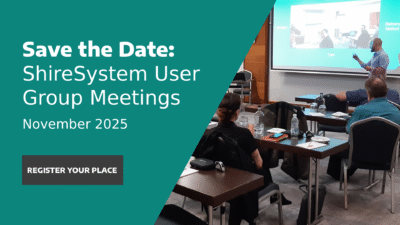From Firefighting to Forward Thinking: Your First Steps Towards Maintenance Maturity

If your maintenance team spends most of its time reacting to breakdowns, juggling last-minute repairs, and struggling with unplanned downtime, you are not alone. Many organisations begin their maintenance journey this way, often stuck in a cycle of reactive maintenance. The good news is that a better, more proactive approach is within reach.
This is where the concept of maintenance maturity comes in. It helps organisations assess where they are and identify how to move towards a more efficient, structured maintenance strategy. You do not need to change everything at once. With the right tools and a few simple steps, you can start making meaningful improvements.
Here’s how to begin.
Step 1: Know Your Starting Point
Maintenance maturity is all about progress. It refers to how developed and effective your maintenance practices are, typically measured across six stages:
Level 1: Reactive Maintenance– Fixing equipment only after it breaks, <40% planned maintenance.
Level 2: Essential Preventative – Scheduling regular maintenance to prevent failures, 40-59% planned maintenance.
Level 3: Advanced Preventative – Most tasks are planned. Sites adopt centralised oversight, advanced compliance, ERP integrations, and permit-to-work systems., 60-79% planned maintenance.
Level 4: Expert Preventative – A fully integrated paperless system with advanced reporting and automatic workflow creation, 80-89% planned maintenance.
Level 5: Condition Based Maintenance – Maintenance is triggered by real-time equipment condition data (e.g. sensors or inspections). Tasks are generated automatically, reducing manual input and improving speed and accuracy, 90-94% planned maintenance.
Level 6: Predictive Maintenance – Advanced analytics forecast failures before they occur. This results in maximised reliability, reduced downtime, and highly optimised costs, with over 95% planned maintenance.
Most organisations start out in the reactive maintenance stage (level 1). The goal is to move towards a more proactive and ultimately predictive approach, where unplanned downtime is minimised and resources are used more efficiently.
Step 2: Build Your Asset Register
Before you can improve your maintenance processes, you need a clear understanding of what you are maintaining. This starts with capturing accurate information about your assets.
A basic asset register includes details such as:
- Equipment type and location
- Maintenance history
- Manuals and warranties
- Inspection or service requirements
ShireSystem CMMS makes it easy to build and manage an asset register. This creates the foundation for more structured planning and better decision-making.
Step 3: Shift to Planned Maintenance
One of the first improvements you can make is moving away from reactive repairs towards a planned maintenance schedule. This means setting up regular checks and servicing tasks before issues arise.
Planned maintenance can help:
- Reduce downtime
- Improve safety and compliance
- Extend the life of your assets
- Allow your team to work more efficiently
ShireSystem allows you to automate planned maintenance by setting up recurring schedules, assigning tasks, and tracking completion. It reduces admin and ensures nothing is overlooked.
Step 4: Start Tracking and Learning
Even in the early stages of maintenance maturity, it is important to track what is happening. Useful metrics to monitor include:
- Frequency of equipment breakdowns
- Time taken to complete repairs
- Cost of parts and labour
- Maintenance activity by asset or location
Collecting this data helps you identify trends, prioritise improvements, and make informed decisions. With ShireSystem, you can easily generate reports and dashboards that turn raw data into valuable insights.
Step 5: Involve Your Team
Maintenance maturity is not only about tools and processes. It also relies on people. Involve your team in the journey. Share goals, encourage feedback, and recognise progress, no matter how small.
ShireSystem supports collaboration by offering mobile access. Engineers can log jobs, complete checklists, and upload photos directly from site. This keeps everyone engaged and ensures accurate, up-to-date records.
Start Your Journey Today
Reaching higher levels of maintenance maturity does not happen overnight. But every step forward reduces risk, saves time, and improves performance.
Whether you are just starting out or looking to refine your existing processes, ShireSystem CMMS can support your journey with flexible, easy-to-use tools designed for real-world maintenance teams.
Interested in learning more?
